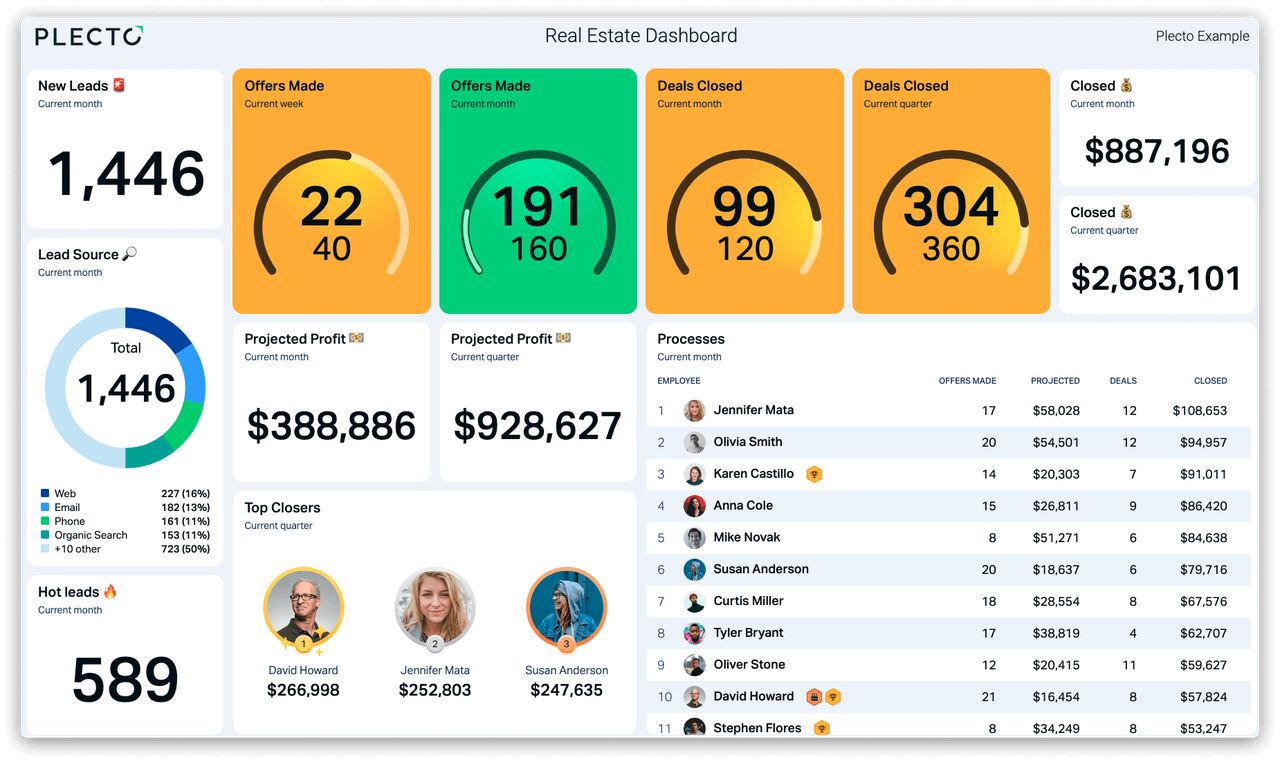The use of data analytics in real estate is on the rise as agents become more aware of its benefits – and the recent challenges of low inventory and higher interest rates have prompted a lot of agents to look into new real estate lead generation tactics. But these aren’t the only real estate trends shaping the industry in 2023.
7 Real Estate Industry Trends to Watch
While none of us has a crystal ball, looking at real estate industry trends in the context of recent and current events is one of the best ways to predict how the industry will look in the near future. These seven real estate trends are poised to impact the industry throughout the rest of Q4 – and into the new year.
1. Increased Digitization
While the thick of the pandemic may be behind us, its lingering effects continue to shape real estate trends three years later. Increased digitization in real estate was one of the first byproducts of lockdowns. With people unable to visit prospective properties in person, they turned to 3D tours, virtual open houses, drone videos, and other online tools to assist in their home search. Real estate sites like Zillow stepped up to offer the convenience of one-stop shopping by enabling buyers to view properties, contact real estate agents, and research and apply for financing all in one place. Many of today’s homebuyers are digital natives who’ve gotten used to the convenience of online solutions, so it stands to reason that digital tools are here to stay and will only become more prolific in the future.
2. Negative Urban Migration
Lockdowns created a need for dedicated home office space – and for a lot of people, the desire for more day-to-day living space. Remote work gave workers a newfound geographical flexibility that spurred a significant migration out of major cities to rural areas and suburbs, where space is plentiful and more affordable. Experts expect that this migration is one of the pandemic-era real estate trends that will continue for the foreseeable future, partly due to financial reasons. With the recent cost-of-living spike, some urbanites are finding that they just can’t keep up with city prices. This is also creating a boomerang effect among renters who took advantage of high vacancy rates as an opportunity to follow their city-living dreams only to realize that it wasn’t what they were expecting.
Build your first dashboard.
Start your 14-day free trial today
3. The Rise of “Middle Neighborhoods”
So-called “middle neighborhoods” combine the best of city and suburban living into a hybrid that resonates with former and would-be-former city dwellers. These communities currently exist within major US cities as prewar neighborhoods containing a mix of single-family homes on small lots and multi-unit housing with shops and restaurants within walking distance, and good bicycling infrastructure and public transportation links. Most of these unique areas, like the Westbrae neighborhood in Berkeley, California, were built before the 1940s. If remote work continues to give people more autonomy in choosing where to live, we could see real estate trends that include new middle neighborhoods being built. Demand for these types of areas will only increase as people look to live more eco-consciously, which many view as being at odds with today’s suburban lifestyle.
4. Higher Interest Rates
Unfortunately, higher interest rates are one of the real estate trends that are expected to stick around for a bit longer. This could mean a slow market for the next few years – especially as lenders introduce stricter requirements for borrowers. The combination of inflation and the highest interest rates in more than twenty years means that a lot of people can’t afford to upgrade, while first-time homebuyers have too many financial and psychological barriers to overcome before making such a monumental purchase. This also affects sellers, who might have been planning to downscale to a smaller home, but who have the luxury of waiting until rates come down and buyers have more money to spend.

5. Climbing Demand for Affordable Housing
Higher interest rates and unprecedented rental fees are taking a big bite out of prospective buyers’ budgets. Rising home prices, inflation, and stagnant wages are also hurting people’s buying power – and these factors are all driving demand for more affordable housing. Negative urban migration, one of the real estate industry trends that we explained earlier, has increased demand for housing in previously less desirable areas. As a result, first-time homebuyers can’t “just move farther out” to lower-cost areas. This is a significant barrier to homeownership as the rental market continues to tighten with limited inventory and rising rents.

6. More Proactive Lead Management
The pandemic disrupted almost every aspect of life as we knew it – and while a lot has returned to a new normal, the real estate industry is still feeling its aftershocks. After a fast-moving market that was mostly transactional and based on short-term relationships between agents and their clients, we’ve entered a period where longer-term relationship building will be essential to long-term success. In particular, agents who want to keep ahead of their competition will need to get involved early on in the buyer journey and really nurture those leads. Fortunately, many of today’s CRMs make it possible to automate some of this process.
7. Return to a Buyers’ Market
Interest rates are high and inventory is still limited, but higher interest rates mean a smaller pool of buyers, which will help to stabilize the balance between supply and demand. While the days of multiple offers on the same property aren’t quite relegated to the past, the reduced buying power from current interest rates will quell “over asking” offers. Instead, other conditions like inspections, handover dates, and repairs will hold more bargaining power than price. This is where experienced agents will shine due to their ability to put together creatively nuanced deals that are based on more than just price. While negotiations will be more challenging than in the recent past, this is a fantastic opportunity for skilled agents to build their reputation and secure their future in the industry.
Get a Free 14-Day Trial of Plecto
Plecto offers a range of tools designed to support real estate agents. Sign up for a free 14-day trial and see how Plecto can help you navigate these and future real estate trends!




